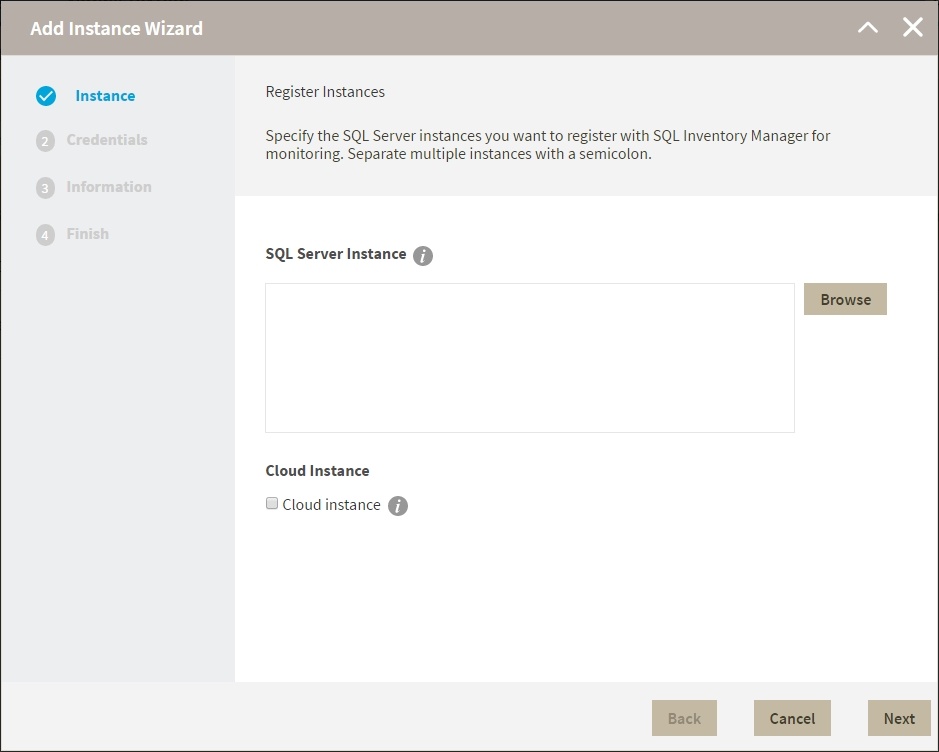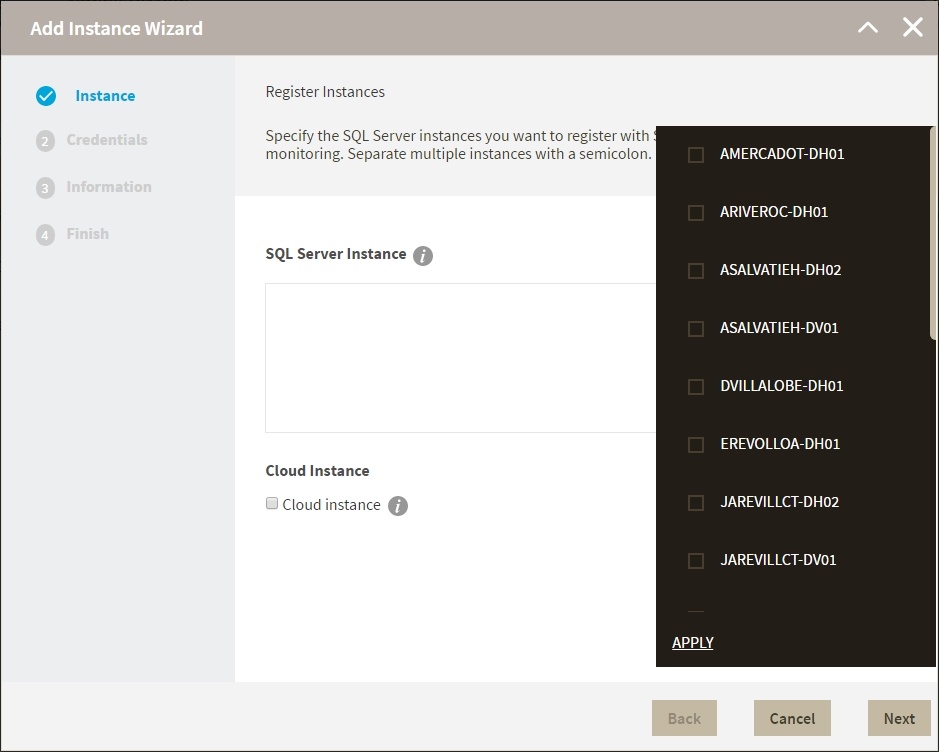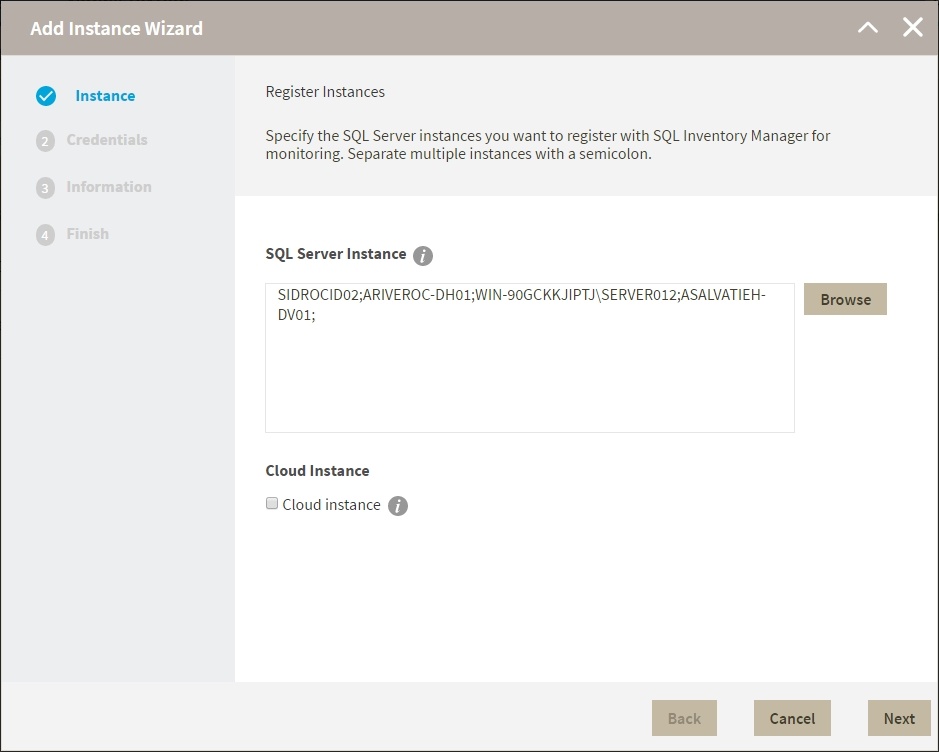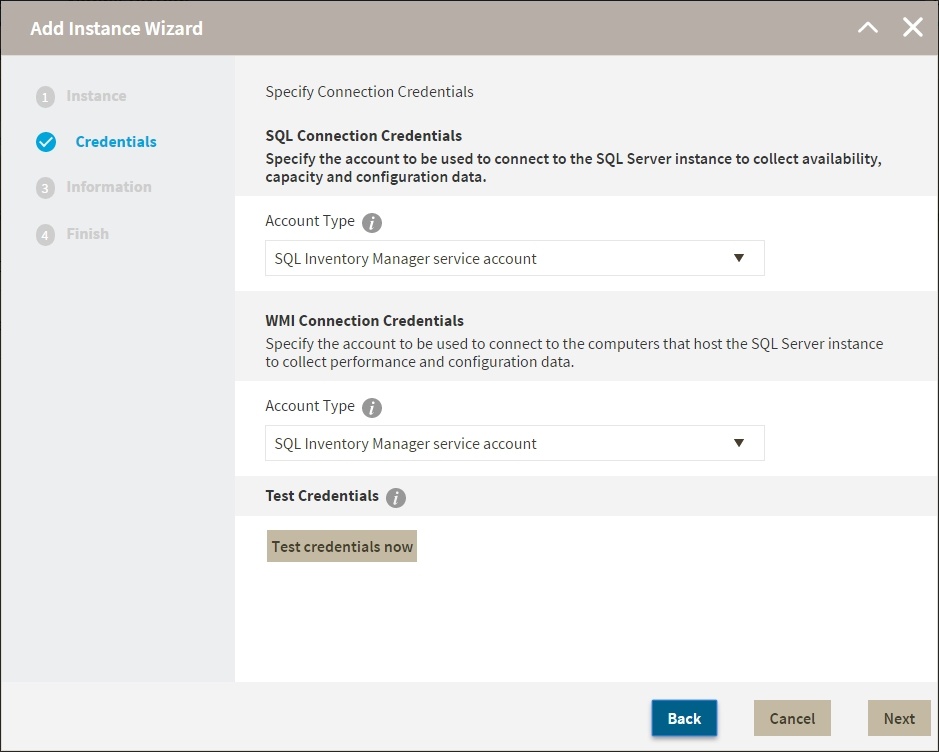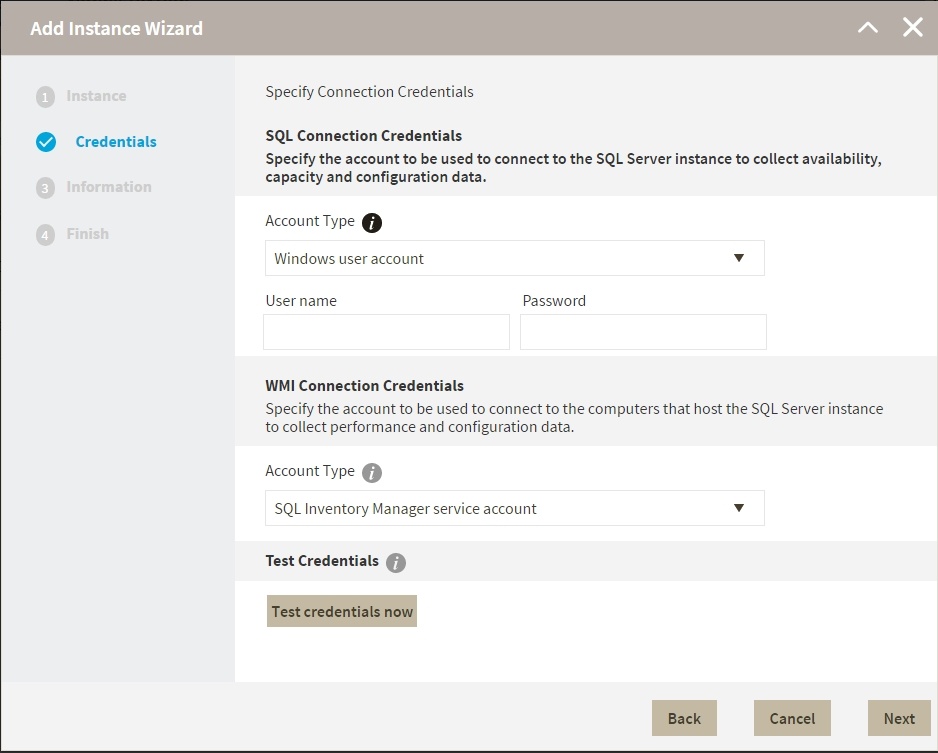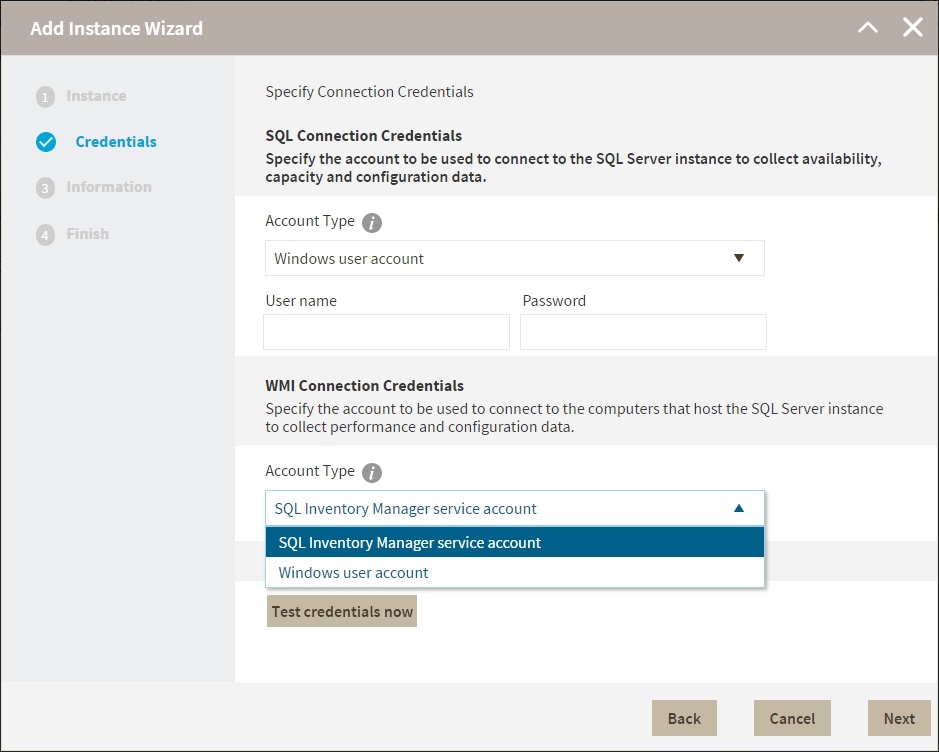Page History
...
The Add Instance Wizard contains the following four sections:
1. Instance
To add an instance
Type , type the name of instance or instances you want to register in the SQL Server Instance box. Use a semicolon to separate instances.
Info When you select instances on the Discovered or Ignored Instances views, the wizard already adds them to this box.
You can use the Browse button to access a list of discovered instances that have not been registered yet with SQL Inventory Manager. Check the box next to the instances you want to add, and click Apply.
- Click Next to go to the next section.
...
- Specify the type of account that you want to use to access your SQL Server instance and collect its information. If you do not want to use the the SQL Inventory Manager service account, you can choose to use a Windows user account or a SQL Server login account from the Account Type list.
- If you select a a Windows user account or SQL Server login account, type the respective user name and password. SQL Inventory Manager uses this account for SQL queries to gather availability and configuration data.
- You can test the correctness of your credentials by clicking Test Credentials.
...
- On this section, you can choose to use the the SQL Inventory Manager service account or a Windows user account by selecting either of them from the Account Type list.
...
If you choose to use a Windows user account, type the respective user name and password. This account allows you to access Windows configuration data of the computer that hosts the registered instance.
...
Info
...
Idera recommends that you use the Test Credentials option to verify that SQL Inventory Manager can successfully monitor the newly registered instances.
3. Information
On this section you can specify additional information for your instances like Owner, Location, Comments and Tags.
...
- Click any of the suggested Popular Tags on the right side of the window. The tag appears now on Current Tags on the left.
- You can click See All Tags on the top right section to display all available tags.
If you want
toto Add a New Tag, type the name in the bottom box, and click ADD. Your new tag will be added to the Current Tags list.
Warning
...
| title | Warning |
|---|
- The tag name must begin with an upper or lowercase alphanumerical character.
- Your tag name must have a maximum length of 20 characters.
- Only the following special characters are valid for tags: ! # @ ( ) ' . : - _ and embedded spaces.
Tip
...
...
Refer to the Managing Tags section for more guidance on how to add, view, edit, or delete tags.
4. Finish
On this section, you can review your Instance Registration Details such as: instance name, SQL Connection Credentials, WMI Connection Credentials, Owner, Location, Comments, and Tags.
...
- You can click any of the title sections (INSTANCE, CREDENTIALS or INFORMATION) and go directly to the place where you need to make the changes.
- You can click click PREV to go back to the previous sections until you find the place where you need to make changes.
After you review your registration details click FINISH. SQL Inventory Manager begins to collect instances information after a few minutes of their registration and will continuously collect availability, performance, and configuration information from them and their host computers.
...
...
